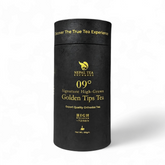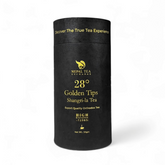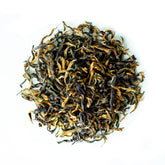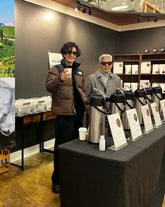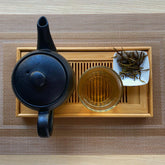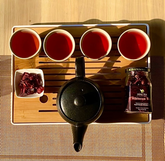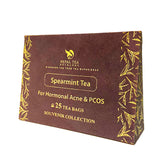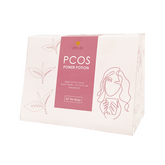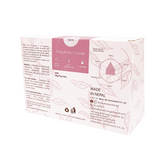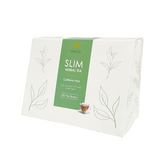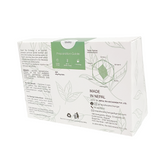A Plant That Makes Your Tea
Introduction
Camellia sinensis, a member of the Camellia genus, is an evergreen shrub. This remarkable plant, with its glossy leaves and delicate white blossoms, holds within it the secrets of creating an astonishing array of teas enjoyed by millions worldwide.

The Camellia sinensis tea plant is a remarkable species that is the source of various types of true tea, including black, green, oolong, and white tea. Here are some fascinating facts about this extraordinary plant:
-
Origin and Cultivation: Camellia sinensis is native to East Asia, specifically Nepal, China, India, and Myanmar. It thrives in tropical and subtropical regions with well-drained soil and ample rainfall. Today, tea cultivation has spread to many parts of the world, including Africa, South America, and even certain regions of Europe.
-
Evergreen Shrub: The tea plant is an evergreen shrub that can grow up to 30 feet tall if left untrimmed. However, for commercial cultivation, it is typically pruned to a more manageable height of around 3 to 5 feet to facilitate harvesting.
-
Leaves and Harvesting: The tea plant has shiny, elliptical leaves with serrated edges. The young leaves and leaf buds, known as "flushes," are plucked for tea production. The timing and method of harvesting can significantly impact the flavor and quality of the tea.
-
Caffeine Content: One of the remarkable characteristics of Camellia sinensis is its natural caffeine content. The caffeine acts as a natural pesticide, protecting the plant from insects. The amount of caffeine in tea can vary based on factors such as the type of tea, the growing conditions, and the processing methods.
-
Tea Processing: The leaves of the Camellia sinensis plant undergo various processing methods to produce different types of tea. Black tea is fully oxidized, resulting in its robust flavor and dark color. Green tea is unoxidized, preserving its vibrant green color and fresh taste. Oolong tea is partially oxidized, offering a balance between the characteristics of black and green tea. White tea is minimally processed, featuring delicate flavors and a light appearance.
-
Antioxidants and Health Benefits: Tea derived from the Camellia sinensis plant is rich in antioxidants called catechins and flavonoids. These compounds contribute to the numerous health benefits associated with tea consumption, including improved heart health, enhanced cognitive function, reduced risk of certain cancers, and increased metabolism.
-
Tea Terroir: Similar to wine, the flavor and quality of tea are influenced by its terroir, which encompasses factors such as climate, soil composition, elevation, and even the surrounding flora. Different tea-growing regions and specific gardens can produce teas with unique flavor profiles and characteristics.
-
Cultivar Varieties: Over time, numerous tea cultivars have been developed, each with its distinct qualities. Varieties such as Assam, Darjeeling, Tie Guan Yin, and Sencha have gained recognition and are highly sought after by tea connoisseurs for their specific flavors and aromas.
-
Tea Tourism: The popularity of tea has led to the emergence of tea tourism, where enthusiasts and curious travelers can visit tea estates, gardens, and tea museums to learn about the tea-making process, participate in tea tastings, and gain a deeper appreciation for the tea culture.
-
Sustainability and Conservation: Sustainable tea cultivation practices are becoming increasingly important. Many tea plantations adopt organic farming methods, promote biodiversity, and implement water conservation techniques to minimize their environmental impact and protect the delicate ecosystems where the tea plants thrive.
The Camellia sinensis tea plant is a remarkable botanical wonder that has captivated tea lovers for centuries. Its versatility in producing a wide range of flavors and its health benefits make it a beloved beverage enjoyed by millions around the world.
Cultivation
Cultivating Camellia sinensis, the plant behind tea production, requires care, precision, and an understanding of its unique growth requirements. Here is an overview of the cultivation process:
-
Choosing the Right Environment: Camellia sinensis thrives in specific climatic conditions. It prefers regions with moderate temperatures, ample rainfall, and well-drained soil. Generally, it grows best in tropical and subtropical regions with altitudes ranging from sea level to around 6,500 feet (2,000 meters).
-
Propagation: Camellia sinensis can be propagated through seeds or cuttings. While seeds offer genetic diversity, they take longer to mature. Cuttings, on the other hand, produce clones of the parent plant and ensure desired traits are preserved. Young shoots or stem cuttings are carefully selected and rooted to create new plants.
-
Establishing the Tea Garden: Tea gardens are meticulously planned and laid out to optimize growing conditions. The soil is prepared by ensuring proper drainage and organic matter content. Terracing is sometimes employed in hilly regions to prevent erosion and ensure even water distribution.
-
Planting: The young Camellia sinensis plants are transplanted into the prepared soil during the appropriate season. They are spaced adequately to allow air circulation and room for growth. Shade nets or windbreaks may be used to protect the young plants from harsh weather conditions.
-
Pruning and Shaping: Regular pruning is essential to encourage bushy growth and facilitate plucking. Pruning involves removing older or damaged leaves and maintaining a desired shape for ease of harvest. It also helps in maintaining the health and productivity of the tea plants.
-
Pest and Disease Management: Like any agricultural crop, Camellia sinensis is susceptible to pests and diseases. Integrated pest management techniques are employed to minimize the use of pesticides. This includes practices such as monitoring, biological control, and cultural methods to promote plant health and prevent infestations.
-
Harvesting: The timing of tea leaf harvest varies depending on the type of tea desired. For green teas, the leaves are often plucked in the early spring when they are young and tender. Black teas may require leaves to mature further before plucking. The topmost leaves and bud are carefully plucked by hand or using mechanical harvesters.
-
Processing: After harvest, the tea leaves undergo various processing methods depending on the desired type of tea. This may involve withering, rolling, oxidizing, drying, and sometimes fermentation. Each processing step is crucial in bringing out the unique flavors, aromas, and characteristics of the final tea product.
-
Quality Control and Packaging: Once processed, the tea undergoes quality control measures to ensure it meets the desired standards. Tea leaves of different grades and qualities are sorted and packaged accordingly. Proper storage conditions are maintained to preserve the freshness and flavor of the tea.
Throughout the cultivation process, tea growers employ their expertise and experience to optimize the quality and yield of Camellia sinensis. The result is a beverage that delights the senses and continues to captivate tea enthusiasts around the world.
How Different Types Of Tea Are Made?
Camellia sinensis, commonly known as the tea plant, is the source of various types of teas. The different types of teas are made through variations in processing methods. Here's a breakdown of how different teas are made from Camellia sinensis:

Green Tea:
- Harvesting: Young leaves and buds are plucked from the tea plant.
- Withering: The leaves are spread out and allowed to wither, reducing their moisture content.
- Heat Treatment: The withered leaves are quickly heated (usually through steaming or pan-firing) to halt oxidation and preserve their green color and fresh flavor.
- Rolling: The leaves are rolled to shape them into curls or other desired forms.
- Drying: The rolled leaves are dried to remove any remaining moisture.
|
Love Green Teas? Click Here.
|
Black Tea:
- Harvesting: Leaves and buds are plucked from the tea plant.
- Withering: The leaves are spread out and left to wither, losing some moisture.
- Rolling: The withered leaves are rolled, causing the cell walls to break and initiate oxidation.
- Oxidation: The rolled leaves are exposed to air, allowing enzymatic oxidation to occur. This process darkens the leaves and develops their distinctive flavors.
- Fermentation: The oxidized leaves are sometimes referred to as fermented, though this process is technically oxidation rather than fermentation.
- Drying: The oxidized leaves are dried to stop the oxidation process and reduce moisture content.
|
Check out our Black Tea. Click Here
|
Oolong Tea:
- Harvesting: Leaves and buds are plucked from the tea plant, typically when they are partially oxidized.
- Withering: The leaves are spread out and withered, similar to black and green tea processing.
- Tossing/Fermentation: The withered leaves are lightly shaken or tossed to bruise the edges, starting the oxidation process. The level of oxidation varies depending on the desired type of oolong tea.
- Oxidation: The leaves are allowed to partially oxidize, resulting in a range of flavors and aromas.
- Fixation: The partially oxidized leaves are then heated to halt further oxidation.
- Rolling: The leaves are rolled, shaping them into distinctive twisted forms.
- Drying: The rolled leaves are dried to remove moisture and preserve their flavors.
|
Check out our Oolong Tea. Click Here
|
White Tea:
- Harvesting: The young, unopened buds or the newest growth of the tea plant are plucked.
- Withering: The leaves and buds are spread out and left to wither naturally, often in shaded areas.
- Drying: The withered leaves and buds are gently dried, typically by air or minimal heat, to preserve their delicate nature.
|
Check out our White Tea. Click Here
|
It's important to note that these steps may vary slightly depending on regional variations and specific tea-making traditions. Additionally, herbal teas or tisanes made from plants other than Camellia sinensis do not undergo the same processing as true teas.
Camellia Sinensis In Nepal
|
Woman cultivating Ilam Tea |
Nepal is known for its high-quality tea production, and Camellia Sinensis is cultivated in various regions of the country. Here is some information about Camellia sinensis in Nepal and tea production in the country:
-
Camellia Sinensis Varieties :Nepal cultivates several varieties of Camellia Sinensis, including Camellia Sinensis var. Sinensis and Camellia Sinensis var. Assamica. These varieties adapt well to the diverse climatic conditions and elevations found in Nepal.
-
Tea Regions: The tea production in Nepal is concentrated in several regions, with the most prominent ones being Ilam, Jhapa, and Dhankuta in the eastern part of the country. These regions are situated in the foothills of the Himalayas, which provide excellent conditions for tea cultivation.
-
Altitude and Climate: Nepal's tea gardens are situated at varying altitudes, ranging from around 600 meters to 2,000 meters above sea level. The cool climate, ample rainfall, and well-drained soil in these regions create favorable conditions for the growth of tea plants. The Himalayan Mountain tea is one of the finest quality orthodox teas produced in the Himalayas of Nepal.
-
Organic Tea Production: Nepal takes pride in its organic tea production. Many tea gardens in the country adhere to organic farming practices, avoiding the use of synthetic pesticides and fertilizers. This focus on organic cultivation methods has helped Nepal gain recognition for producing high-quality, environmentally friendly teas.
-
Flavors and Aromas: Nepal's tea production is known for its distinctive flavors and aromas. The diverse terroir, combined with careful processing methods, contributes to the unique characteristics of Nepalese teas. They often exhibit floral, fruity, and earthy notes, with a smooth and mellow taste.
-
Production Techniques: The tea leaves in Nepal are typically hand-plucked to ensure the best quality. After harvesting, the leaves undergo withering, rolling, oxidation (for black teas), and drying. Tea producers in Nepal often employ traditional methods combined with modern techniques to preserve the tea's natural flavors and qualities.
-
Specialty Teas: Nepal produces a variety of specialty teas that have gained recognition in the global market. Some notable types include white teas, black teas, oolong teas, green teas, and silver needle teas. These specialty teas are often crafted with great care and attention to detail, resulting in exceptional flavors and appearances. The Ilam known as the finest producers of tea orthodox, is promoting its flavors calling Ilam Tea, to globalize the unique flavors of premium quality tea varieties.
-
Social and Economic Impact: Tea production plays a significant role in Nepal's economy, providing employment opportunities and contributing to rural development. Tea gardens serve as sources of livelihood for many farmers and workers, positively impacting local communities.
-
Fair Trade and Sustainability: Nepal has made strides in promoting fair trade practices and sustainability in its tea industry. Many tea estates in Nepal have obtained certifications such as Fair Trade, Rainforest Alliance, and Organic, ensuring ethical working conditions and environmental stewardship.
Nepal's Camellia Sinensis teas have gained recognition for their quality and unique characteristics, attracting tea enthusiasts worldwide. The country's focus on organic cultivation, traditional processing techniques, and commitment to sustainability contribute to the remarkable teas produced in Nepal.


